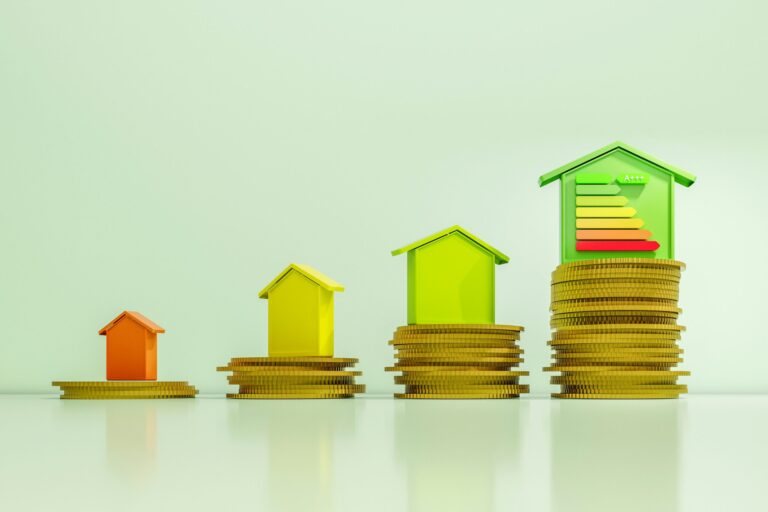Sustainability has rapidly evolved into a pivotal factor in the commercial real estate (CRE) sector, with both landlords and tenants increasingly prioritizing eco-friendly practices. As the world grapples with climate change and environmental degradation, the commercial real estate market is undergoing a significant transformation to address sustainability concerns. The importance of green buildings and energy-efficient practices has surged in the UK, the US, and beyond, with government regulations, shifting market demands, and investor preferences driving the change.
The Growing Demand for Sustainable Buildings
Sustainability in commercial real estate has long been a topic of interest, but as of April 2024, it has become the defining factor influencing real estate decisions across major markets. According to recent reports by Savills, the UK’s leading real estate services provider, sustainability reporting has grown increasingly sophisticated, influencing investment strategies and tenant preferences. With more comprehensive metrics in place, landlords are now required to track and report on a variety of environmental factors, such as energy consumption, carbon emissions, and waste management.
Green building certifications, such as Leadership in Energy and Environmental Design (LEED) and the Building Research Establishment Environmental Assessment Method (BREEAM), have become standard benchmarks for both landlords and tenants. For tenants, these certifications are vital, as businesses seek office spaces that align with their environmental values and commitments to sustainability. Many companies are now requiring their landlords to provide energy-efficient buildings that meet rigorous environmental standards, signaling a significant shift toward green real estate.
Regulatory Changes and Government Mandates
One of the most notable drivers of this trend is government regulations, particularly in the United States and the United Kingdom. In the US, the Securities and Exchange Commission (SEC) has implemented new Climate Disclosure Rules, which require publicly traded companies to disclose their greenhouse gas emissions and climate-related risks. These disclosures are not only shaping corporate strategies but are also having a profound effect on the real estate market. Companies with high emissions are increasingly focused on finding buildings with lower environmental footprints, pushing landlords to adopt greener building practices.
In the UK, the government’s commitment to achieving net-zero emissions by 2050 has resulted in a shift in commercial real estate policies. Green building certifications are now more in demand as businesses seek to meet their environmental targets and improve their sustainability profiles. Additionally, energy efficiency standards have been tightened, encouraging building owners to retrofit older structures to meet current energy-saving requirements.
Investment Shifts and Tenant Preferences
Sustainability is no longer seen as a niche concern but a mainstream investment criterion. As climate risks become more apparent, institutional investors are increasingly considering sustainability as a key factor in their decision-making process. Real estate investment trusts (REITs) and other institutional investors are focusing on properties that meet green standards, as these assets tend to be more resilient in the long run. These buildings not only offer operational savings but also have a higher potential for long-term capital appreciation.
Moreover, tenants, particularly large corporations, are placing greater emphasis on sustainability when choosing office spaces. Many are committing to net-zero targets and are seeking office buildings that help them achieve these goals. For example, tech giants and financial institutions in both the US and the UK are demanding office spaces that are energy-efficient, feature sustainable design, and use renewable energy sources.
The rise of remote work in recent years has also influenced how businesses view office spaces. Many companies are downsizing their office footprints and opting for high-quality, energy-efficient spaces that align with their sustainability goals. These companies are investing in buildings that not only help them reduce their carbon footprints but also create healthier environments for their employees.
Retrofitting and Renovating for a Sustainable Future
As demand for sustainable commercial spaces continues to rise, there has been a noticeable uptick in retrofitting existing buildings to meet energy efficiency standards. Retrofitting older buildings with green technologies such as solar panels, energy-efficient HVAC systems, and LED lighting is an increasingly popular strategy for landlords looking to meet sustainability goals and attract environmentally-conscious tenants.
Building owners are also investing in sustainability upgrades, such as better insulation, smart building technologies, and waste reduction initiatives. These renovations not only enhance the environmental performance of buildings but also improve their marketability. Properties that achieve green certifications often command higher rents and lower vacancy rates, as they are seen as more desirable by both tenants and investors.
The Future of Sustainable Commercial Real Estate
Looking ahead, it is clear that sustainability will remain a central focus in the commercial real estate sector. With global environmental concerns intensifying and governments tightening regulations, green building practices and energy-efficient technologies will continue to shape the future of the industry.
As we approach 2025, we can expect further advancements in sustainability reporting, stricter energy efficiency standards, and a greater emphasis on the environmental performance of buildings. Commercial real estate stakeholders, including landlords, tenants, and investors, will need to stay ahead of these trends to remain competitive in a rapidly changing market.
In conclusion, the commercial real estate market in 2024 is undergoing a major shift toward sustainability. This transformation is being driven by a combination of regulatory pressures, tenant demands, and the growing recognition that sustainability is not only good for the planet but also good for business. By embracing eco-friendly practices, the commercial real estate sector is playing a critical role in the global effort to combat climate change.
